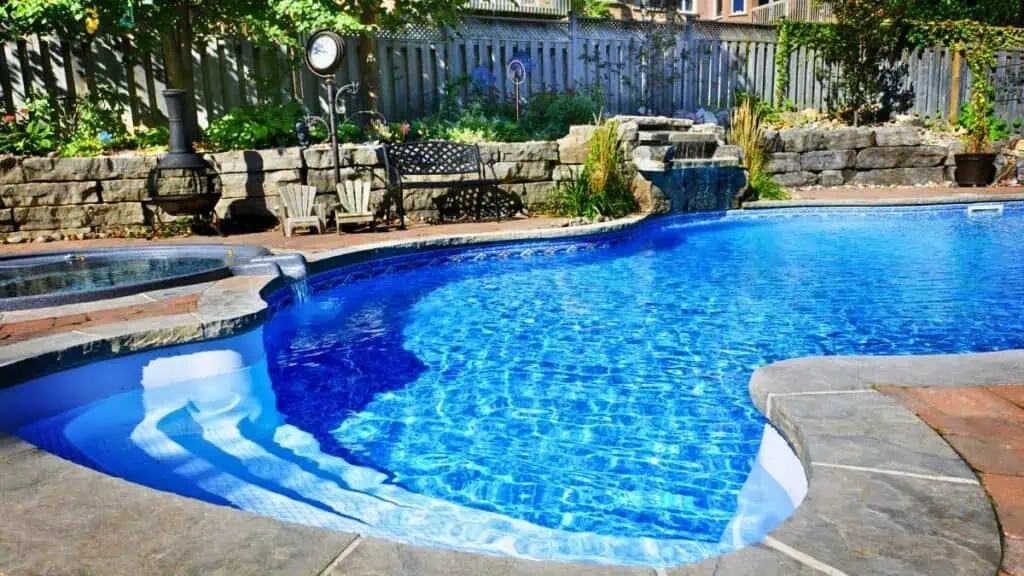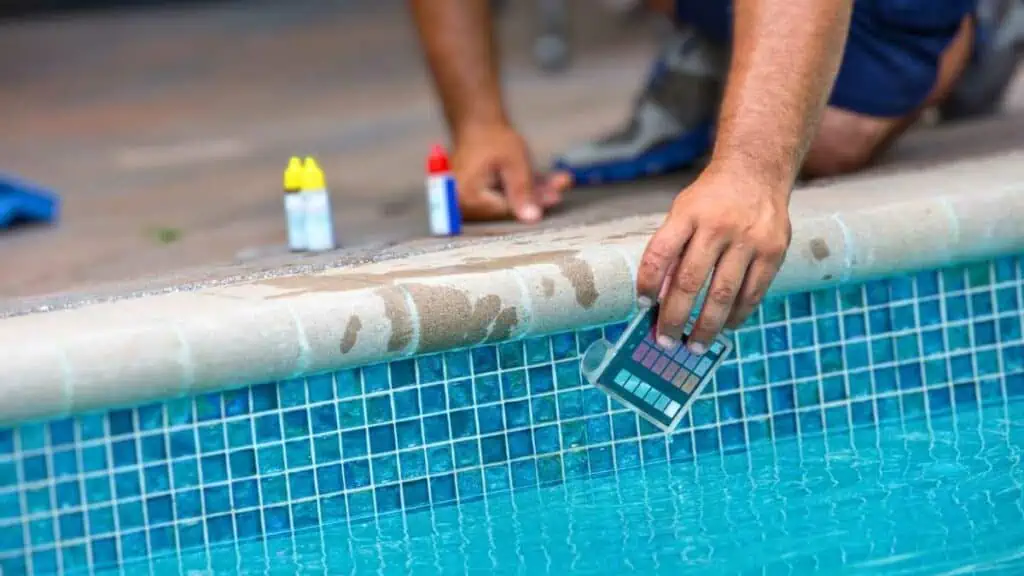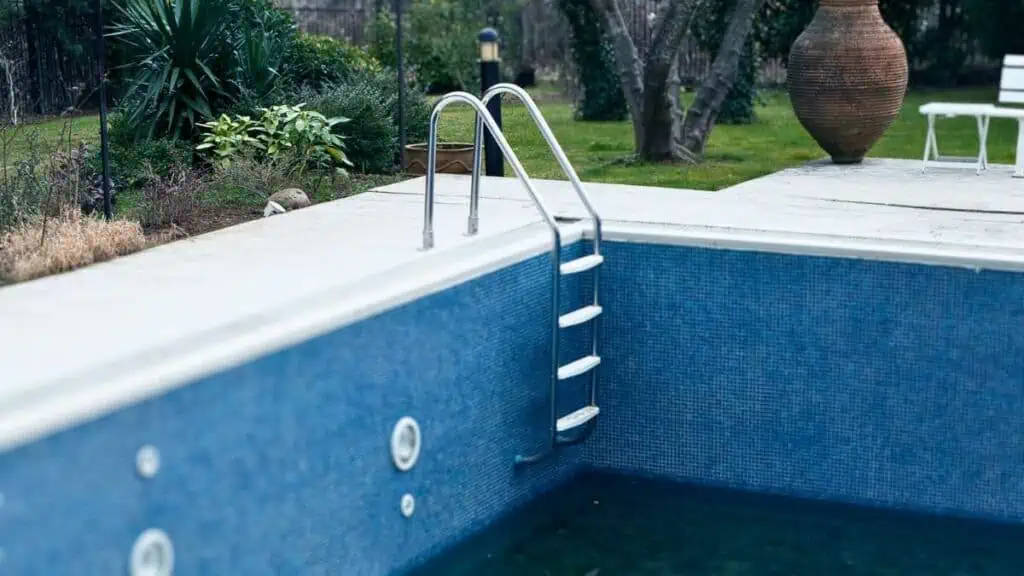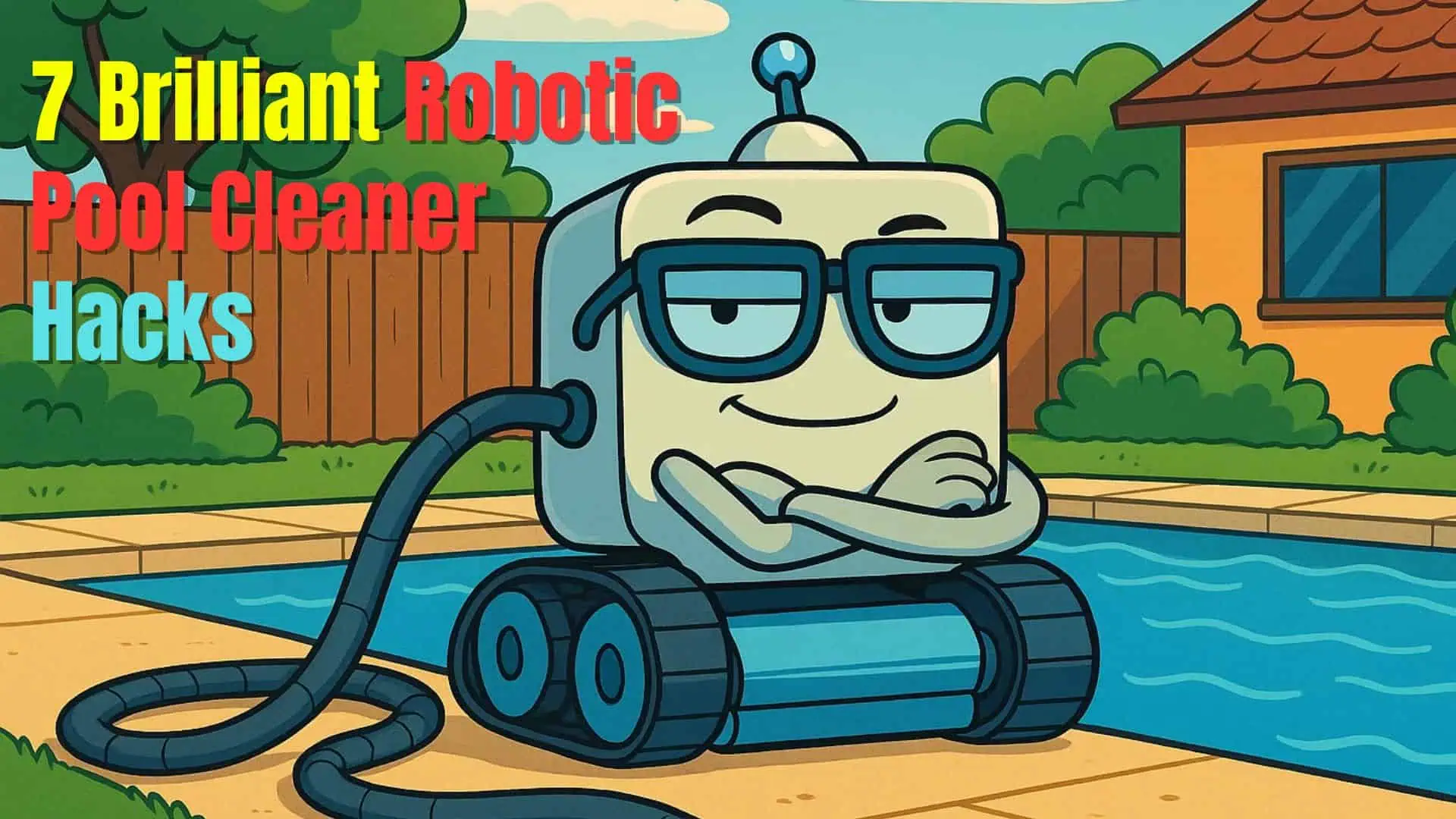Keeping your pool in top shape involves understanding and managing its chemical balance. One compound often overlooked is cyanuric acid, a stabilizer that prevents chlorine from degrading in sunlight.
However, too much cyanuric acid can render your pool’s chlorine ineffective, leading to cloudiness, algae blooms, and unsafe swimming conditions.
We will guide you through the steps to lower cyanuric acid levels and restore your pool to a healthy, sparkling state. From understanding the role of cyanuric acid to exploring various methods of reduction, this guide will equip you with everything you need to maintain the perfect cya level in pool water.
High cyanuric acid in pool: Causes, dangers, and solutions. High levels of cyanuric acid in a pool can lead to chlorine ineffectiveness, cloudy water, and an increased risk of bacterial growth. To lower cyanuric acid levels, dilution with fresh water or using a specialized product can help maintain a safe and balanced pool environment.

Understanding Cyanuric Acid and Its Role in Pools
The Purpose of Cyanuric Acid
Cyanuric acid (CYA), a pool stabilizer or pool conditioner, is essential in maintaining your swimming pool’s chemical balance. Its primary function is to protect chlorine from the sun’s ultraviolet rays, which can cause premature chlorine breakdown.
Without proper CYA levels, chlorine evaporation would be significantly higher, leading to increased costs and reduced effectiveness of your pool sanitizer.
Cyanuric Acid and Chlorine Relationship
The relationship between cyanuric acid and chlorine is delicate, as CYA forms a weak bond with the free chlorine in your pool water. This bond helps protect the chlorine from UV light degradation, ultimately reducing chlorine loss.
This protection is crucial in outdoor pools, as sunlight exposure is a significant factor in chlorine stability. Indoor pools typically have less exposure to sunlight and, hence, require a lower amount of cyanuric acid in their water.
Stabilized chlorine, such as dichlor or trichlor, already contains cyanuric acid as an additive. Using stabilized chlorine can save time since the stabilizer is included in the sanitizer. However, using unstabilized chlorine, like calcium hypochlorite, alongside a separate stabilizer can give you more control over CYA levels in your pool.
Problems of High Levels of CYA
While cyanuric acid is essential for protecting chlorine from UV light, maintaining optimal levels is crucial. Too much CYA in your pool can cause several problems:
- Reduced effectiveness of chlorine: High CYA levels lower the overall efficacy of chlorine in your pool, making it less able to kill bacteria and sanitize the water.
- Increased risk of algae growth: With lower chlorine effectiveness, algae blooms are more likely to grow in your pool, causing discoloration and potentially irreversible damage to your pool surfaces.
- Cloudy water: Excess cyanuric acid can lead to cloudy pool water, making it difficult to see the bottom and negatively impacting the pool’s appearance.
Monitoring and maintaining proper CYA levels in your pool is vital to avoid these issues.
If you find that your CYA levels are too high, you can take steps to lower them, such as partially draining and refilling your pool with fresh, unstabilized water or using chlorine products that don’t contain cyanuric acid.
Testing and Identifying High Cyanuric Acid Levels

Using Test Strips and Kits
Using test strips or a test kit is the most straightforward method to determine if your pool has high cyanuric acid levels.
Test strips are easy to use; simply dip the strip into your pool water, allow it to absorb the water for a few seconds, and compare the color on the strip to the provided color chart.
Although it is generally accepted that a more accurate option is a liquid test kit, which involves mixing your pool water with reagents that will change color based on the cyanuric acid concentration, I have never had a problem with test strips.
Regularly testing your pool’s water chemistry is crucial, as it will help you monitor and maintain the ideal cyanuric acid levels.
Recommended Test Strips
Understanding the Ideal Cyanuric Acid Range
A traditional pool’s ideal cyanuric acid level (CYA) should be between 30 and 50 parts per million (PPM). If you have a saltwater pool, slightly higher levels are acceptable.
Proper CYA levels help maintain a stable and effective free chlorine concentration. This balance is essential for preventing algae growth and bacteria and maintaining a comfortable pH level for swimmers.
Maintaining the appropriate cyanuric acid pool level can help keep your pool water clear, reduce the chlorine smell, and avoid the problems associated with high CYA levels, such as chlorine lock, imbalanced water chemistry, and pH levels.
When cyanuric acid levels become too high, it’s necessary to take action to lower them, such as by partially draining and refilling the pool, using a reverse osmosis system, or adding a cyanuric acid reducer.
Remember to closely monitor your pool’s alkalinity and pH balance to ensure optimal water quality and prevent conditions that promote bacteria growth and algae formation.
Methods for Lowering Cyanuric Acid in Pool

Draining and Refilling the Pool
One of the most effective ways to lower cyanuric acid (CYA) levels in your pool is to drain and refill it with fresh water. This method helps to remove contaminants, balance pool chemistry, and reduce total dissolved solids.
You can use a submersible pump to remove a significant portion of the water to drain and refill your pool. Clean the pool surfaces once the pool is empty and then refill it with fresh water.
After refilling, test the water chemistry and adjust chemical levels, if necessary, to achieve balanced water conditions. Remember that this method can be labor-intensive and may not be suitable during heavy rain or if you have limited access to water.
Performing Partial Drain and Dilution
An alternative method to draining and refilling the entire pool is performing a partial drain and dilution. In this process, you remove a percentage of the pool water and replace it with fresh water. This method helps to dilute CYA levels and maintain the right balance of free chlorine in your pool.
To calculate the percentage of water to drain, follow these steps:
- Determine your pool’s current CYA level.
- Identify the target CYA level for balanced pool chemistry.
- Calculate the percentage difference between the two levels.
For example, if your current CYA level is 200 parts per million (ppm) and the target level is 50 ppm, the difference is 150 ppm. Draining 75% of your pool water can lower the CYA concentration to an acceptable range.
During the partial drain process, monitor and adjust other chemical levels, such as calcium hardness and pH, to maintain balanced water conditions.
How to Lower Cyanuric Acid in Pool without Draining
Sometimes, you may use a cyanuric acid reducer, such as bio-active pool chemicals, or specialized filters to lower cya in pool without draining.
Cyanuric acid reducers work by breaking down excess CYA in your pool water, making it easier for the filtration system to remove it. Some popular CYA reducers include natural chemistry products and specialized enzymes.
Specialized filters, such as reverse osmosis systems or ultraviolet (UV) filters, can also help lower CYA levels by removing contaminants and excess calcium hypochlorite, sodium hypochlorite, and lithium hypochlorite from your pool water. These systems prevent the buildup of CYA from the chlorination processes that use dichlor, trichlor, or other stabilizers.
It’s important to note that using cyanuric acid reducers and specialized filters may not be as effective as draining and refilling your pool. However, they can be useful when water is scarce or draining is not feasible.
Preventing High Cyanuric Acid Levels in the Future
Proper Pool Chemical Management
Proper pool chemical management prevents high cyanuric acid (CYA) levels. Always regularly test your swimming pool water to maintain CYA levels between 30 and 50 ppm.
When adding chlorine, carefully follow the manufacturer’s instructions and avoid using stabilized chlorine products, like dichlor and trichlor, which contain cyanuric acid. Instead, consider using unstabilized chlorine, such as calcium hypochlorite or sodium hypochlorite (liquid chlorine).
Keep an eye on the pH levels in your pool, ensuring they remain between 7.2 and 7.6. This helps maintain water balance and prevents algae and bacteria growth. Additionally, monitor your pool’s total alkalinity (TA) and calcium hardness levels, which should be between 80-120 ppm and 200-400 ppm, respectively.
Considering Alternative Chlorination Methods
Explore alternative chlorination methods to keep cyanuric acid levels in check:
- Saltwater chlorine generator: This system uses common table salt to create free chlorine, eliminating the need for traditional chlorine products.
- Ultraviolet (UV) systems: UV rays help break down chlorine-resistant microorganisms and reduce the demand for traditional chlorine products.
These alternatives can help maintain proper water chemistry without introducing excessive amounts of cyanuric acid.
Maintaining Water Balance and Pool Sanitation
Water balance is crucial not only for preventing high CYA levels but also for maintaining proper pool sanitation. Along with monitoring pH levels and TA, keep an eye on your pool’s free chlorine levels. Free chlorine should remain between 2-4 ppm to kill bacteria and algae effectively.
To maintain proper sanitation, clean your pool regularly; vacuum, brush pool surfaces, and clean your filters. This keeps your pool looking good and prevents microorganisms from proliferating.
Lastly, outdoor pools should be protected from direct sunlight, which can contribute to chlorine degradation. Using pool covers can help reduce the impact of ultraviolet rays on your pool chemistry, preserving free chlorine and preventing high cyanuric acid levels.
Summary
One common concern for pool owners in pool maintenance is how to lower CYA (chlorine stabilizer) levels in their pools. CYA, also known as cyanuric acid, acts as a protective shield for chlorine, preventing it from being quickly destroyed by sunlight.
However, excessive CYA levels can impede the effectiveness of chlorine and lead to various issues, such as algae growth and reduced disinfection. Several methods can be employed to address this problem.
- Firstly, dilution through partial water replacement is a straightforward approach. The CYA concentration decreases by draining a portion of the pool water and refilling it with fresh water.
- Secondly, a specialized chemical called CYA reducer can help break down and eliminate excess cyanuric acid.
- Additionally, practicing proper pool water management, such as maintaining appropriate sanitizer levels and keeping the pool covered when not in use, can reduce the need for excessive CYA.
Understanding how to lower CYA in a pool is crucial for maintaining optimal water balance and ensuring a clean and safe swimming environment.








Leave a Reply